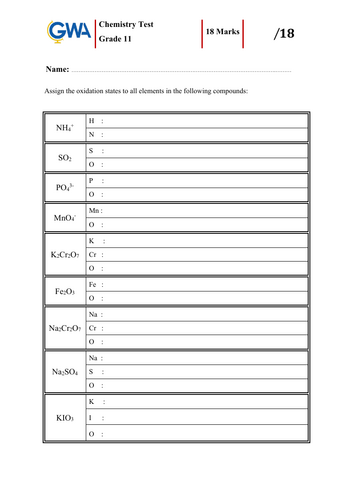

























Structure 3.1—The periodic table: Classification of elements
Structure 3.1.1—The periodic table consists of periods, groups and blocks.
Structure 3.1.2—The period number shows the outer energy level that is occupied by electrons. Elements in a group have a common number of valence electrons.
Structure 3.1.3—Periodicity refers to trends in properties of elements across a period and down a group.
Structure 3.1.4—Trends in properties of elements down a group include the increasing metallic character of group 1 elements and decreasing non-metallic character of group 17 elements.
Structure 3.1.5—Metallic and non-metallic properties show a continuum. This includes the trend from basic metal oxides through amphoteric to acidic non-metal oxides.
Structure 3.1.6—The oxidation state is a number assigned to an atom to show the number of electrons transferred in forming a bond. It is the charge that atom would have if the compound were composed of ions.
Structure 3.2—Functional groups: Classification of organic compounds
Structure 3.2.1—Organic compounds can be represented by different types of formulas. These include empirical, molecular, structural (full and condensed), stereochemical and skeletal.
Structure 3.2.2—Functional groups give characteristic physical and chemical properties to a compound. Organic compounds are divided into classes according to the functional groups present in their molecules.
Structure 3.2.3—A homologous series is a family of compounds in which successive members differ by a common structural unit, typically CH2. Each homologous series can be described by a general formula.
Structure 3.2.4—Successive members of a homologous series show a trend in physical properties.
Structure 3.2.5—“IUPAC nomenclature” refers to a set of rules used by the International Union of Pure and Applied Chemistry to apply systematic names to organic and inorganic compounds.
Structure 3.2.6—Structural isomers are molecules that have the same molecular formula but
different connectivities.
Something went wrong, please try again later.
This resource hasn't been reviewed yet
To ensure quality for our reviews, only customers who have purchased this resource can review it
Report this resourceto let us know if it violates our terms and conditions.
Our customer service team will review your report and will be in touch.
